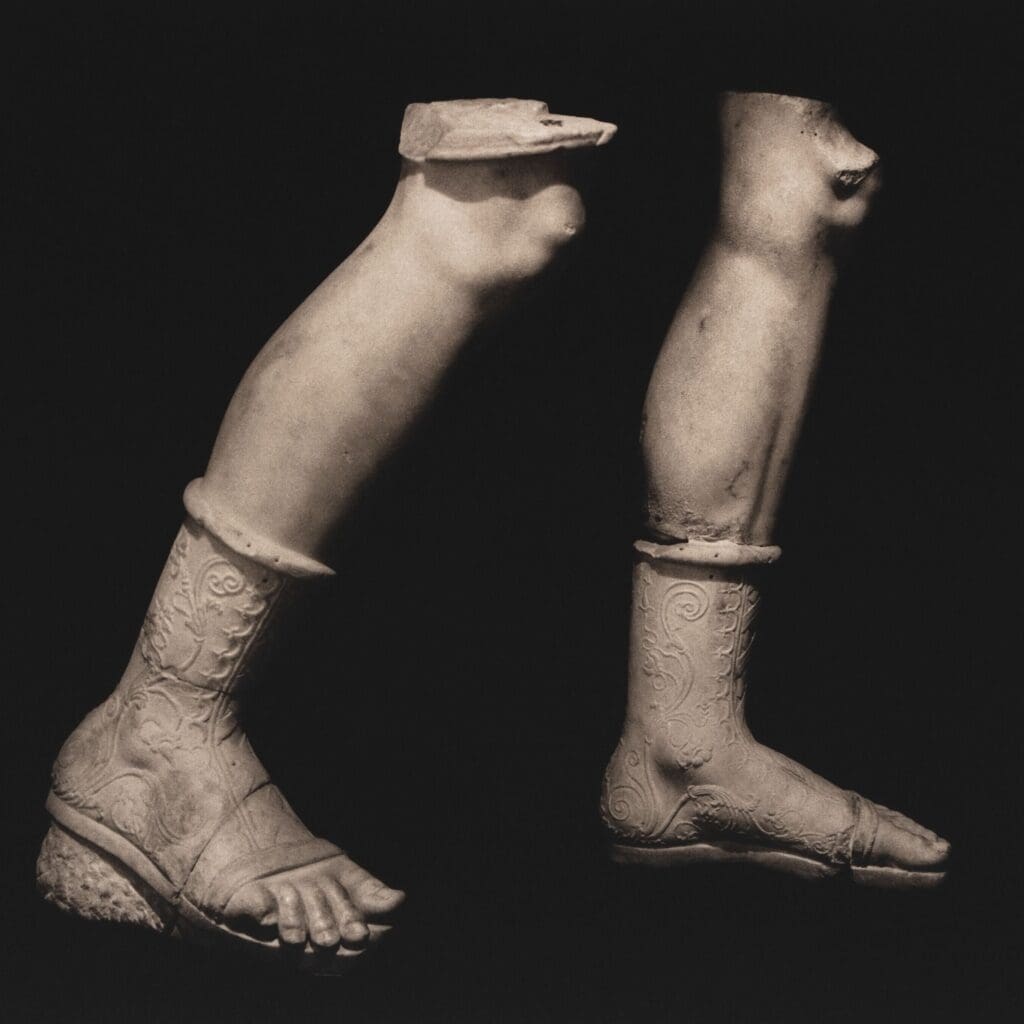30 January – 4 May 2026
As legendary photographer Don McCullin turns 90, the Holburne announces plans to exhibit for the first time in the UK his most recent body of work: close intimate studies of Roman sculptures
The Holburne is delighted to present Don McCullin: Broken Beauty, an exhibition of work by one of the most celebrated photographers and photojournalists of our time. Known for intuitively composed and dramatic black-and-white photographs, with subjects spanning conflict, humanitarian crises and post-war Britain, as well as landscape, portrait, and still-life, this exhibition brings together some of the most iconic images from his seven-decade career.
At the core of the exhibition is a group of McCullin’s most recent works: images of Roman sculptures that he has captured in museums around the world that have not previously been shown in the UK. The sculptures, broken survivors from the ancient world, offer, perhaps, a quiet solidity that is a counter-balance to the violence and chaos that McCullin has so famously documented since the 1950s. As McCullin has written about the ancient statues that he has photographed:
“These are the best antidote to the grim realities of the front line; I hold in awe the mouldering stone, the fragments of dreams and the mysteries of the vanquished past. To observe the statues in the silence and stillness of their museum gives me solace – they don’t question my conscience or challenge my sense of guilt.”
Displayed alongside this core of recent work is a rich selection of images drawn from across McCullin’s career: from London to Vietnam, Northern Ireland to Cyprus, scenes of violence and suffering offset by still-lives and landscapes from the Middle East, Southeast Asia, and his home in Somerset.
Sir Don McCullin CBE (b. 1935, London) is one of the most influential and renowned photographers of the last 60 years. Known for producing dark and intense images, throughout his career he has documented the horrors of war, famine, homelessness and desperate poverty, as well as quiet still-lives and expansive landscapes. The exhibition will include some of McCullin’s most iconic images along with others less familiar.
The images on display – while including graphic depictions of violence and suffering – have been selected to emphasise the humanity that informs every one of McCullin’s images, revealing an attitude of respect and empathy towards his subjects, however abject their situation, that characterises his oeuvre.
Growing up in poverty in North London, McCullin volunteered for photoreconnaissance for the Royal Air Force when called up for National Service in 1954. A photograph of his gangland friends on the site of a bombed house – The Guvnors – proved to be a turning point in his life, when it was published by The Observer in 1958. From there, McCullin started learning on the job as he began working for the newspaper, with a remit to capture Britain’s social landscape.
In those early years, McCullin established himself as a singular lens on the social landscape of post-war Britain: documenting stark landscapes of the industrial north, unemployment and homelessness in the capital, and growing unrest across the country. Assignments as a special photographer for The Observer and The Sunday Times took him into conflict zones across, most famously, Vietnam, Cyprus, Biafra, Northern Ireland, and Beirut. It is for his work as a war photographer for which McCullin is best known, and it was during this time he produced his most celebrated images: of a shell-shocked GI in Vietnam, starving children in Biafra, and of British troops on the streets of Londonderry.
Since the 1980s McCullin has also turned towards more peaceful subjects, which also feature in the exhibition. Meditative still-lives have a quiet intensity, as do brooding images of the British landscape, especially around Somerset where he now resides. The more recent photographs of Roman sculptures developed from his interest in the ancient sites of the wider Roman empire. The most recent images have not been publicly displayed in the UK and show a mature photographer with a distinctive and refined artistic sensibility. Above all, as seen throughout his immense body of work, the exhibition aims to emphasise the fact that McCullin’s work is characterised by an innate and profound compassion for humanity, a striking human empathy, as well as exceptional mastery of composition and process.
Director of the Holburne, Chris Stephens, said:
“I have long been a fan of Don McCullin’s work and I’ve wanted to show it at the Holburne since my arrival here. As well as being one of the greatest photographers of our time, Don has had life-long connections to this part of the world. Most importantly, we are thrilled to be showing for the first time in the UK a group of his most recent images of Roman sculpture which in their haunting beauty offer a contemporary view of ancient art that sits perfectly, it seems to me, at the Holburne.”
Feet from a statue of Artemis, Istanbul Archaeological Museum,Istanbul, Turkey, 2022 © Don McCullin. Courtesy the artist and Hauser & Wirth. Artwork documentation: Eva Herzog

